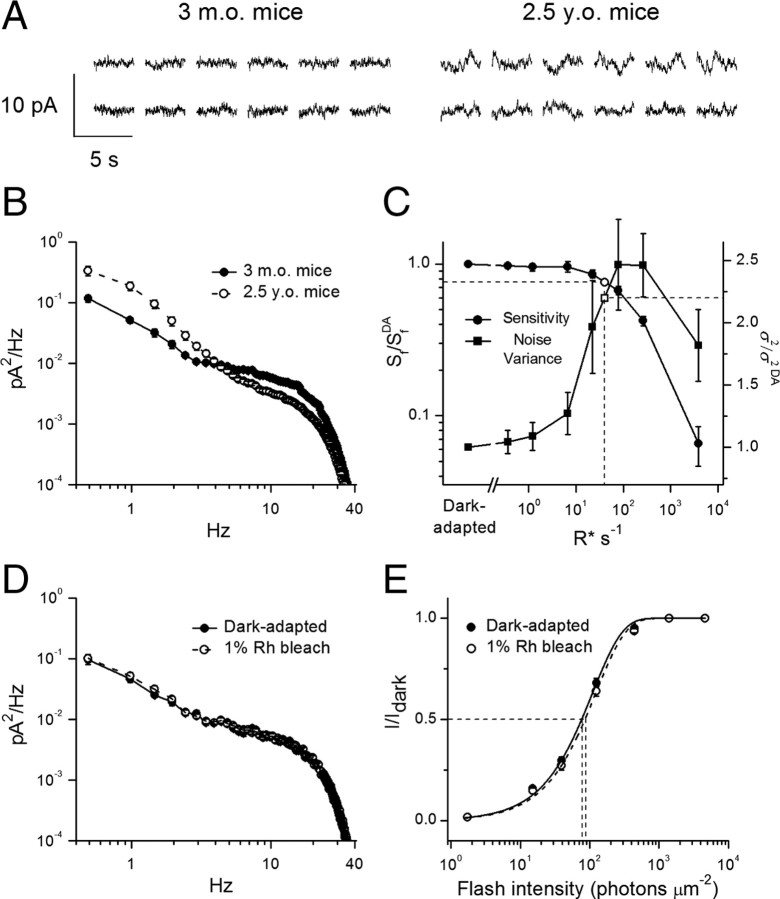Figure 6.
Cellular dark noise in 3-month-old and 2.5-year-old mouse rods. A, Representative 3.5 s current recordings from two 3-month-old (left) and two 2.5-year-old (right) rods in darkness. B, Mean dark power spectra revealed a substantial increase in the low-frequency cellular dark noise in aged rods. Averaged cellular dark noise variances (σ2, 0.4–10 Hz) are 0.175 ± 0.015 pA2 (n = 18) for adult rods and 0.393 ± 0.057 pA2 (n = 17) for aged rods. C, Correlation between flash sensitivity (S f, left y-axis, n = 16) and normalized cellular dark noise variance (σ2, right y-axis, n = 16) as a function of background light intensity in adult-mouse rods. Background light of 40 R* s−1 (vertical dashed line) caused a 2.2-fold increase in the cellular noise level and accompanying 1.3-fold decrease in rod sensitivity. DA indicates parameters in dark adapted-conditions. D, Mean dark noise power spectra of rods from adult mice in dark-adapted state and then after bleaching 1% of their visual pigment (n = 15). σ2 values (0.4–10 Hz) are 0.130 ± 0.010 pA2 (dark-adapted state) and 0.141 ± 0.011 pA2 (after bleaching) (p = 0.49). E, Normalized averaged intensity-response relations for the cells in D. Points were fitted with saturating exponential functions that yielded I 1/2 values (thin dashed lines) of 76 ± 3 and 85 ± 4 photons μm−2 for 3-month-old dark-adapted mouse rods (solid line) and the same cells following 1% rhodopsin bleach (dashed line), respectively (p < 0.05). All values are means ± SEM (smaller than symbol size for most data points). Rh, Rhodopsin.

